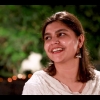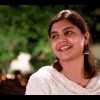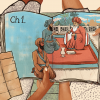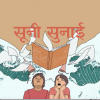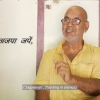Subuhi Jiwani: When did the first critical writing on the visual arts appear in India?
Parul Dave-Mukherjee: Information of this kind for pre-modern art in India is hard to come by. Besides, the visual arts as a separate category was quite alien to traditional ‘Indian’ knowledge systems. If we look at Bharata’s Nāțyaśāstra (200 BCE–200 CE) as an early text of codes for cultural practices like drama, the visual arts were viewed as an aid to theatre. Nāțya or drama was understood in terms of dŗśya and śrāvya or visual and aural modes of representation. Again, the visual arts were subsumed under the 64 arts listed in the Kāmasūtra as the accomplishments of a cultured man or a woman, which included basket making, weaving, the art of conversation and even burglary!
It was in the early medieval period (8th–13th Century CE) that the writing of texts prescribing design principles for the visual arts peaked. Many well-known Śilpaśāstras or texts that describe arts, crafts, and their design rules, principles and standards, like Mānasollāsa, Mānasāra and Śilparatna come from this period. Usually, the Śilpaśāstras carry prescriptive information about what is expected of the śilpi or citravid (an expert in painting). They contain iconometrical protocols (for instance, the figure of Vishnu should have certain attributes and measurements) or/ and underline the importance of resemblance or sādŗśya that a trained artist should be able to handle. The prominence of these texts during this period indicates a higher status of the artist and legitimises his/her physical labour. As compared to this, the hierarchy between manual and intellectual labour had first been established in the Buddhist period (6th Century BCE–8th Century CE).
S.J.: What kind of writing on the visual arts was contained in other ancient Sanskrit treatises?
P.D.M.: Writings on the visual arts like painting and sculpture were embedded in literary genres like kāvya or poetry as well. Like the ancient Greeks, India too had a tradition of ekphrasis or an evocative description of paintings or sculptures, which was often used as a literary device. Kalidasa in his Abhijñānaśakuntalam made the protagonist Dushyanta speak poetically about his paintings of Shakuntala while standing in front of them; the description is almost visceral. C. Sivaramamurti was a pioneer in collecting these verbal descriptions of paintings. They often take the form of proverbs but generally express a Platonic bias against painting—a painted object ultimately fails you because it can never take the place of the real object.
S.J.: What role did the theorist or the commentator of the visual arts play in the public sphere of those times?
P.D.M.: Art had to have a public role in those times as the very idea of art for art’s sake is a 19th-century European phenomenon and an oblique response to the crisis thrown up by the Industrial Revolution. If I cite the Citrasūtra of the Vişņudharmottara Purāņa as an example, the text is in the form of a dialogue between the sage Mārkañdeya and the prince Vajra. The very first chapter speaks about the birth of painting through the birth of the celestial nymph Urvashi. In passing, Mārkañdeya claims that painting was created for the welfare of the people (loka-hita) but he does not elaborate. The idea of public sphere is again quite a modernist one whereas here, the idea of public is dispersed as broadly ethical and tied up with the three goals of human life or puruşārtha that are artha (wealth), kāma (desire) and mokşa (freedom from desire and the cycle of existence). Ultimately, one has to recognise this as a caste Hindu world view.
S.J.: When did the discipline of art history take birth in India and how has it evolved?
P.D.M.: Art history arrives in India under the aegis of colonialism around late 18th century, but the cultural nationalists appropriate it and successfully challenge the colonial misrepresentations of multi-headed and multi-armed gods and goddesses as ‘much maligned monsters’. The first decolonizing moment came before independence and A.K. Coomaraswamy’s defense of Indian art around the first quarter of the 20th century must be seen as a salient move to question this colonial legacy. Another important moment in the history of critical writing on the arts came up in the postcolonial era with the publication of the Journal of Arts and Ideas. Meanwhile, artists like J. Swaminathan created space for indigenism as a critical concept in art practice and also intervened at the level of institution building; Bharat Bhavan in Bhopal, which he was instrumental in establishing, was critical of both colonial as well as national elitisms and put forth the idea of a common platform for metropolitan artists and rural/tribal artists to show their works. Besides this, he ran the short-lived magazine Contra’66 which Geeta Kapur has called ‘an avant-garde gesture’ (Kapur 2001) ART India magazine 6.2:76).
At the moment, when a global art history has emerged, we are poised at a delicate juncture where once again charges of derivative discourse are leveled against Indian art historians. The question about whether indigenous knowledge systems and art theories can be culled to decolonise our ways of thinking is looming large. I call this delicate because it is vital to cull from these great sources of the past—Abhinavagupta’s famous commentary on the Nāțyaśāstra is a rich mine—to imagine another way of art theorising without lapsing into nativism. This turn to indigenous sources has to be critical of certain values (sexism, casteism, etc), which do not fit in with our present times.
S.J.: Besides art historical writing, what kind of writing on the visual arts was being published in the popular and the independent press in the modern period?
P.D.M.: Like in the West, so in India—art writing emerged out of literary writing. Most original writers on modern art, like Apollinaire, were poets. In India, too many writers on art and art critics had a strong literary background, for instance, Nissim Ezekiel, Richard Bartholomew and more recently, Ashok Vajpeyi. However, the first art reviews emerged from Calcutta in journals like Modern Review, Rupam and Journal of the Indian Society of Oriental Art (JISOA). Jaya Appasamy, Stella Kramrisch, O.C. Gangoly and others contributed regularly to them but today very few of their writings retain contemporary interest.
None of these critics and writers wrote for the art market, which was practically non-existent during their time. There were some bold critics like Bartholomew who, at times, tore the artist to pieces and did not hesitate to pronounce value judgments. Other audacious critics like Geeta Kapur only chose to write about artists they had high regard for. This is the reason her early writings often read like manifestos and ended up creating canons, often inadvertently. My knowledge is restricted to English language journals but there was very informed and critical art writing published in regional languages like Marathi, Gujarati, Malayalam, Kannada, Oriya, etc. What have not survived well from the past are the art columns in newspapers. Or rather, their space has diminished in newspapers, which is symptomatic of many other crises in society, like, for example, the way the humanities are increasingly being devalued in our educational system. A country that flaunts its IITs and IIMs has embarrassingly few art institutions that attract creative minds.
S.J.: As compared to ancient and medieval times, how has the critic been seen in the modern period and in the age of the Internet and social media?
P.D.M.: In ancient and medieval periods, it was the literary critic who was a seminal figure. Partly, this had to do with the fact that in Sanskrit literary criticism, the poets and critics came from the same social strata whereas the silpi (the maker) and the author of art treatises often belonged to different castes.
In that sense, the art critic is a product of the modern secular world that emerged during colonial modernity. Rather than addressing the art market, art critics during the colonial period acted as a conduit between the artist and the literate, exhibition-going public. With the onset of liberalisation, the sphere of the art critic began to shrink and the stage was set for the rise of the curator. To a large extent, the dominance of the curator is tied up with the unprecedented reach of information technology, the mobility of images, artists and the international exhibitionary circuits of the biennale. The more diverse the international cultural context became, the more the need for a cultural translator to negotiate this fluid public space. Gone are the days of a passive public who meekly followed the critic. Today, armed with smartphones, the new techno-savvy public seeks spectacles and visual stimulation.
S.J.: What differentiates ‘new’ art histories, the subject of your book, Towards A New History: Studies in Indian Art, from the ones India has inherited?
P.D.M.: Today, the claims of novelty that this book made already seem dated. When it first came out in 2003, it was more of a rhetorical move to mark a rupture between the old school of art history that celebrated an object-centered approach and believed in a stable category of ‘Art’, and our ‘new’ approach that was indebted to the Cultural Studies turn. We shifted attention to larger frameworks and underlined the salience of the politics of representation. The central question raised was: How can art and aesthetics be divorced from the issues of class, gender, sexuality and caste?
The book foregrounded the cultural politics in art history, and led to certain critical reflection on art historiography and the manner in which the class, caste and the gender identity of the pioneering art historians had informed the shape that the discipline has taken. At the same time, it argued that these questions are not just the concerns of modern and contemporary art but equally relevant in the study of pre-modern Indian art. Sugata Ray’s essay in the book on Buddha’s iconography seen through the lens of androgyny is a case in point. Although the book is treated as a textbook in art history departments outside India, in certain conservative quarters in the country, it was received with scepticism and elicited anxiety about the direction in which the discipline is going in its current avatar as Visual Studies.
S.J.: In recent times, there has been a blurring of lines between the roles of the critic and the curator. A new creature called the critic-curator has been born. How do you see this development?
P.D.M.: More than the blurring of lines between the critic and curator, it is the erosion of the boundaries between the curator and the artist that has opened up a new dynamic. For a long time, the critics were calling the shots but now artists double up as curators and the success of the Kochi Biennale attests to this contemporary phenomenon. Today, I think critics have much to learn from artists about the way these practitioners handle material as physical, virtual and conceptual mediums. Just by paying close attention to the materiality of their practice and seeing ‘practice’ as used by Pierre Bourdieu or Michel Foucault (as that which combines elements of theory and practice), a different take on theory is possible, one through which our colonial baggage and unproductive binaries of tradition and modernity can be shed, and a move towards a radical decolonising of our minds can be imagined.
S.J.: Apart from Indian universities that nurture art critics and art historians, would you say that support for art criticism has also come from the market? Does this pose a dangerous trend?
P.D.M.: One of the fundamental problems that we addressed in Towards New Art History is the splitting of art history from art criticism, which was evacuating the political from our concerns. The contemporary cannot be grasped by eliminating the historical but this historical cannot be historicism either, or a linear understanding of time; it must be experimental with temporality. Rather than writing an art history of the contemporary in terms of ‘who got there first’ or ‘who invented new media first’, a perpetual going back and forth and even indulging in anachronism may collapse this false divide between art history and art criticism. Standard art historiography has embraced this forward march of history and ignored many salient geographies of art, which demand recognition, such as the regional modern or modernism as it existed in art being made outside the metropolises of Bombay and Delhi. Rather than moving towards a telos, a backward glance to see these overlooked sites may not only redress amnesia but induce a critical reflection on the desire itself to overlook.
It’s true that art market will not brook critical writing that does not serve its own interest. State art institutions like Lalit Kala Akademi and the National Gallery of Modern Art should ideally offer platforms for experimental and critical takes on modern and contemporary art. Sadly today, with art writing falling in the domain of private art galleries and the state art institutions becoming more and more defunct, art publishing tends to centre around monographs. The art world is flooded with promotional art writing; catalogue writing flourishes and the space for judicious criticism shrinks. The India Art Fair in Delhi started a speaker’s forum to offer a critical platform; however, it remains a stand-alone and doesn’t help to create a critical discourse which can be sustained over time. ART India magazine is again one of the very few magazines that opens up this space. The space of the university appears to be the last remaining bastion that can offer space for non-profit shows and critical discourse, but one School of Arts and Aesthetics at JNU cannot replace what state art institutions can achieve in art pedagogy across the country.
S.J.: Finally, what can we do to help rejuvenate the practice of art criticism?
P.D.M.: Art criticism has to reinvent itself to be relevant to the contemporary art scene without losing its criticality. English language art writing must open its doors to regional art writing without enforcing its frameworks on the latter. It is through this interaction and dialogue that the deep split between the elite and the vernacular can be reduced, if not bridged, and the understanding of the embeddedness of cultural and political contexts must take precedence over a more ‘cosmopolitan’ grasp of the global. The real decolonisation can happen once we are less beholden to the West and get a sense of where we are coming from without valorising any civilisational claims. The past has to be looked at with the same critical eye with which we assess our contemporary location.
References
Kapur, Geeta. 2001. 'Signatures of Dissent, ART India Magazine 6:2.






